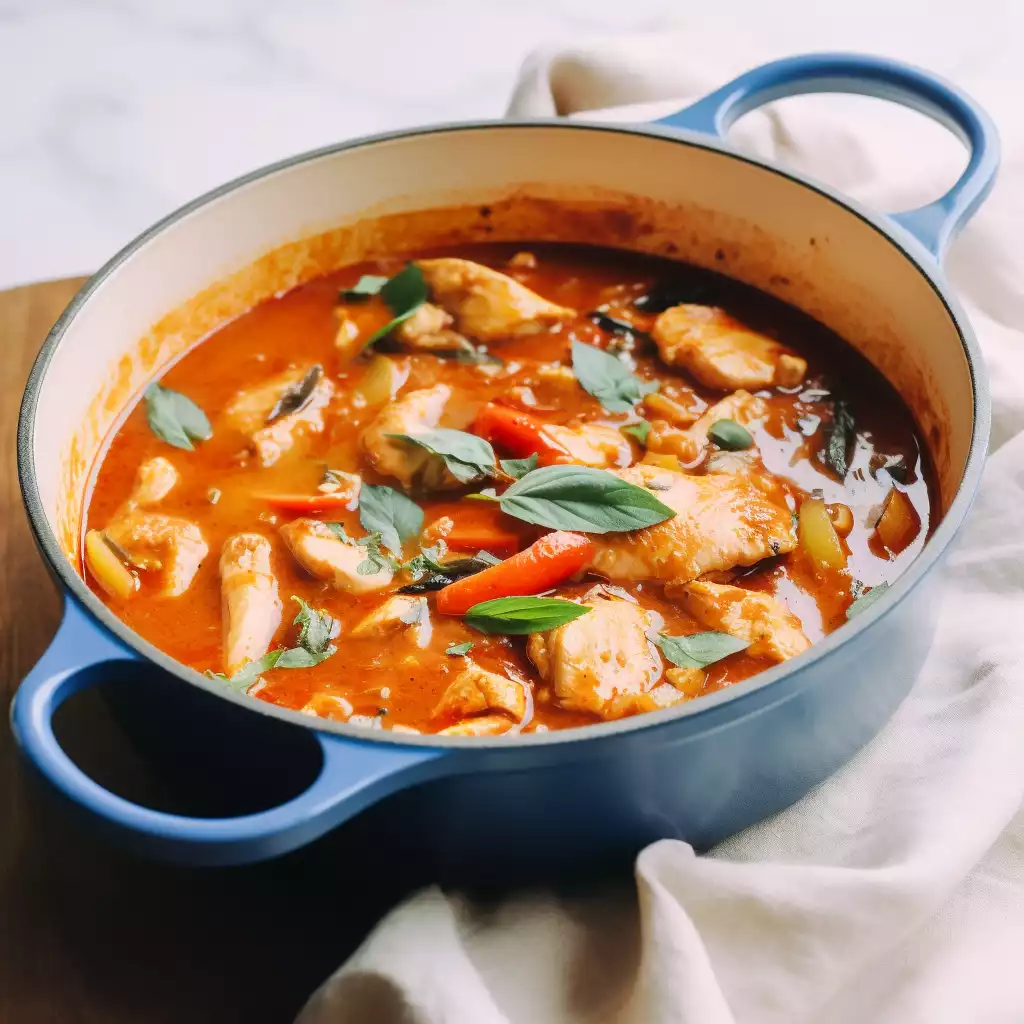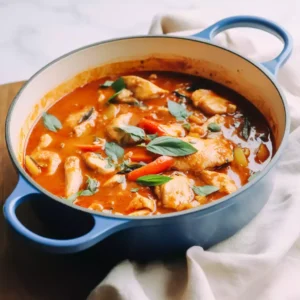
Delve into the vibrant world of Thai cuisine with this delectable dish: Chicken Panang. Originating from Thailand, Panang curry boasts a rich history and a burst of flavors that will tantalize your taste buds.
While it may seem daunting at first, fear not, for I’m here to guide you through every step of this culinary adventure.
Crafted with a harmonious blend of aromatic spices, creamy coconut milk, and succulent chicken, Chicken Panang is a testament to the exquisite balance of sweet, savory, and spicy flavors that Thai cuisine is renowned for.
This recipe strikes the perfect balance between complexity and simplicity, making it an ideal choice for both novice and seasoned home cooks alike.
Expert Tip: For a richer flavor, toast the whole spices before grinding them for the Panang curry paste.
Shallots: These add a subtle sweetness and depth of flavor to the Panang curry paste, enhancing its overall taste.
Garlic: With its pungent aroma and savory taste, garlic provides a robust flavor base for the curry paste.
Lemongrass: Known for its citrusy fragrance, lemongrass infuses the curry paste with a refreshing, zesty flavor.
Red Chili: Adding a hint of heat, red chili peppers lend a spicy kick to the curry paste, balancing out the other flavors.
Coriander Powder: Ground coriander brings a warm, earthy note to the curry paste, complementing the other spices.
Cumin Powder: Cumin adds a subtle smokiness and depth of flavor to the curry paste, enhancing its complexity.
White Pepper: Providing a gentle heat, white pepper adds warmth and depth to the overall flavor profile of the dish.
Salt: Essential for seasoning, salt helps to enhance the flavors of the other ingredients in the curry paste.
Cinnamon Powder: A touch of cinnamon lends a warm, sweet note to the curry paste, balancing the savory and spicy elements.
For the Chicken Panang:
Chicken Thighs: Tender and juicy, chicken thighs are the perfect protein choice for this dish, soaking up the flavorful curry sauce.
Oil: Vegetable oil is used for cooking the curry paste and chicken, helping to prevent sticking and ensuring even cooking.
Coconut Milk: Creamy coconut milk forms the luscious base of the Panang curry, imparting richness and depth to the dish.
Panang Curry Paste: A flavorful blend of aromatic spices and herbs, the Panang curry paste is the star ingredient that gives this dish its signature taste.
Fish Sauce: Adding a savory umami flavor, fish sauce provides depth and complexity to the curry sauce.
Brown Sugar: A touch of brown sugar balances out the flavors of the curry, adding a hint of sweetness to counter the spiciness.
Red Bell Pepper: Sliced red bell pepper adds a pop of color and a sweet, crunchy texture to the dish.
Green Beans: Tender green beans contribute freshness and vibrant color to the Chicken Panang, adding a delightful crunch to each bite.
Basil: Fresh basil leaves are used as a garnish, lending a fragrant aroma and a burst of herbal flavor to the finished dish.
Expert Tip: Adjust the level of spiciness by adding more or less red chili according to your preference. Remember, you can always start with less spice and add more later if needed.
Expert Tip: Don’t rush the cooking process—allowing the curry to simmer gently allows the flavors to develop fully and the chicken to become tender.
Yes, you can substitute chicken breast for chicken thighs if you prefer. However, keep in mind that chicken breast tends to be leaner and may not be as moist and flavorful as chicken thighs.
Absolutely! You can omit the chicken and add tofu or your favorite vegetables, such as tofu, mushrooms, or cauliflower, to make a delicious vegetarian version of Chicken Panang.
Yes, you can prepare the Panang curry paste in advance and store it in an airtight container in the refrigerator for up to a week. This allows you to save time when making the Chicken Panang.
The level of spiciness can be adjusted to suit your taste preferences. If you prefer a milder curry, you can reduce the amount of red chili or omit it altogether. Conversely, if you like it spicy, you can increase the amount of red chili or add some chili flakes.
Yes, you can freeze leftover Chicken Panang in an airtight container for up to three months. When reheating, thaw overnight in the refrigerator and then heat gently on the stove or in the microwave until warmed through.
Here are some more recipes for you to enjoy! If you my recipes don’t forget to rate and leave a comment.
If you have any recipe suggestions, please do not hesitate to ask me. A great way to stay in contact with me is through Instagram, Facebook, Twitter and YouTube. Don’t forget to tag me @CookwithNabeela in your recipe photos!

Subscribe now to receive my latest recipes directly in your inbox. Stay up-to-date and never miss out!

I love to cook! I want to share with you my favourite, delicious family-friendly recipes. I want to inspire you to create fantastic food for your family every day.
Add your first comment to this post